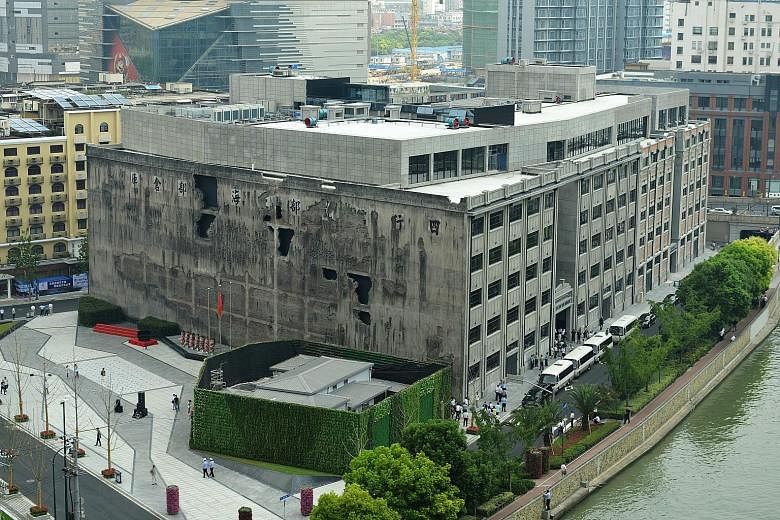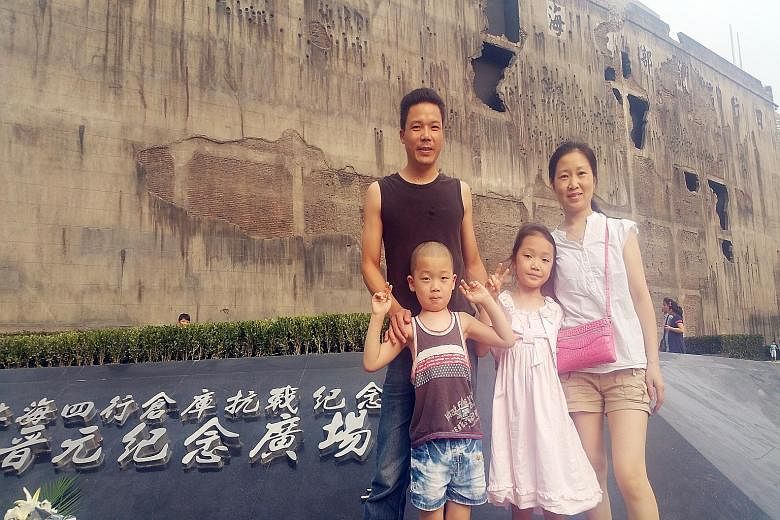In 1937, 423 Chinese soldiers who barricaded themselves in a Shanghai warehouse withstood 10 waves of attacks by the Japanese over four nights, killing more than 200 of the enemy while losing only 10 of their own.
In 1944, a 16-year-old girl in northern Hebei province, who spent three years in a Japanese military camp, was killed after trying to organise a raid by Chinese troops.
In 2015, the spotlight is on these and other World War II heroes as China prepares to mark the 70th anniversary of its victory over Japan in 1945.
State media like the Xinhua news agency have been churning out such tales of courage while China opens museums and rolls out exhibitions to show how ordinary people and soldiers sacrificed their lives or saved others during the 14 years of anti-Japanese resistance.
Yesterday, the Warehouse of Four Banks in Shanghai, known as Sihang, where 423 Kuomintang soldiers put up fierce resistance in October 1937 during the battle of Shanghai, was re-opened after more than a year spent restoring its post-battle look.
Holes left by shells and bullets were recreated, and a new square and sculptures were built, to depict the soldiers' bravery under commander Xie Jinyuan that enabled civilians and other troops to evacuate the city. Their courage boosted morale among the Chinese forces.
Indeed, the commemorative activities are not necessarily aimed at bashing Japan but at boosting nationalism. "We hope that by better understanding our future, future generations can be more confident and determined in making China a strong country," said Mr Zhang Zhong, deputy chief of the Administration of Culture, Radio, Film and TV in the Zhabei district, where the Sihang warehouse is located.
Reports indicate that at least five museums are being rebuilt or restored. They include coastal Shandong's Yucheng city, where work has begun to honour 103 residents of Lun town who died in a 1938 battle.
The commemorative activities began on July 7 with a ceremony marking Japan's full-scale invasion in 1937, after occupying China's north-east in 1931. They will culminate with a Sept 3 military parade at Tiananmen Square.
But reviving heroic tales can be tricky. For instance, controversy has erupted over the story of five soldiers who lured Japanese troops and killed more than 100 of them in 1941 before jumping to their own deaths off Langya mountain in Hebei .
Two years ago, Mr Hong Zhenkuai, former deputy chief editor of Beijing-based magazine Yanhuang Chunqiu, claimed that the five wartime "heroes" were actually bandits and that villagers took revenge by telling Japanese troops of their whereabouts.
People are slamming Mr Hong for smearing the legacy of wartime heroes and the five soldiers' descendants are taking legal action against him.
Shanghai resident Lin Yankun, 33, believes anti-Japanese heroes should not be smeared but honoured to instil pride, as he took photos with his wife and two young children outside the Sihang warehouse yesterday.
"Stories of these heroes have faded over time, especially among the young," he said. " I plan to educate my kids on Sihang heroes so they too can feel proud to be Chinese."


